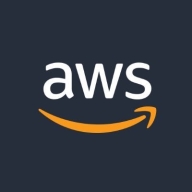

AWS Security Hub and Microsoft Defender for Cloud are competing in centralized security management and threat detection for cloud environments. AWS Security Hub stands out in AWS service integration, while Microsoft Defender for Cloud excels in comprehensive multi-cloud support and advanced threat prevention.
Features: AWS Security Hub offers seamless integration with AWS services, automated compliance checks, and a unified security dashboard. Microsoft Defender for Cloud provides multi-cloud support, advanced threat intelligence, and powerful analytics, alongside integrated threat detection and response.
Room for Improvement: AWS Security Hub could enhance support for hybrid and multi-cloud environments, and simplify its user interface for better usability. Pricing structure refinement to compete with other solutions would also help. Microsoft Defender for Cloud could improve integration with non-Microsoft environments, expand customizability in threat intelligence, and enhance training resources for users.
Ease of Deployment and Customer Service: AWS Security Hub simplifies deployment for AWS users, backed by reliable AWS support. Microsoft Defender for Cloud extends deployment ease across multiple cloud environments with Microsoft's extensive customer service network, offering greater adaptability for diverse strategies.
Pricing and ROI: AWS Security Hub is effective for cost management within AWS, offering transparent pricing. Microsoft Defender for Cloud has a broader cost spectrum due to its robust features but provides significant ROI in multi-cloud deployments. AWS Security Hub's pricing is advantageous for AWS-centric businesses, while Microsoft Defender's comprehensive support justifies its cost.
| Product | Market Share (%) |
|---|---|
| Microsoft Defender for Cloud | 9.1% |
| AWS Security Hub | 4.1% |
| Other | 86.8% |


| Company Size | Count |
|---|---|
| Small Business | 10 |
| Midsize Enterprise | 5 |
| Large Enterprise | 12 |
| Company Size | Count |
|---|---|
| Small Business | 26 |
| Midsize Enterprise | 7 |
| Large Enterprise | 45 |
AWS Security Hub is a comprehensive security service that provides a centralized view of security alerts and compliance status across an AWS environment. It collects data from various AWS services, partner solutions, and AWS Marketplace products to provide a holistic view of security posture. With Security Hub, users can quickly identify and prioritize security issues, automate compliance checks, and streamline remediation efforts.
The service offers a range of features including continuous monitoring, threat intelligence integration, and customizable dashboards. It also provides automated insights and recommendations to help users improve their security posture. Security Hub integrates with other AWS services like Amazon GuardDuty, AWS Config, and AWS Macie to provide a unified security experience. Additionally, it supports integration with third-party security tools through its API, allowing users to leverage their existing security investments.
With its user-friendly interface and powerful capabilities, AWS Security Hub is a valuable tool for organizations looking to enhance their security and compliance posture in the cloud.
Microsoft Defender for Cloud is a comprehensive security solution that provides advanced threat protection for cloud workloads. It offers real-time visibility into the security posture of cloud environments, enabling organizations to quickly identify and respond to potential threats. With its advanced machine learning capabilities, Microsoft Defender for Cloud can detect and block sophisticated attacks, including zero-day exploits and fileless malware.
The solution also provides automated remediation capabilities, allowing security teams to quickly and easily respond to security incidents. With Microsoft Defender for Cloud, organizations can ensure the security and compliance of their cloud workloads, while reducing the burden on their security teams.
We monitor all Cloud Security Posture Management (CSPM) reviews to prevent fraudulent reviews and keep review quality high. We do not post reviews by company employees or direct competitors. We validate each review for authenticity via cross-reference with LinkedIn, and personal follow-up with the reviewer when necessary.